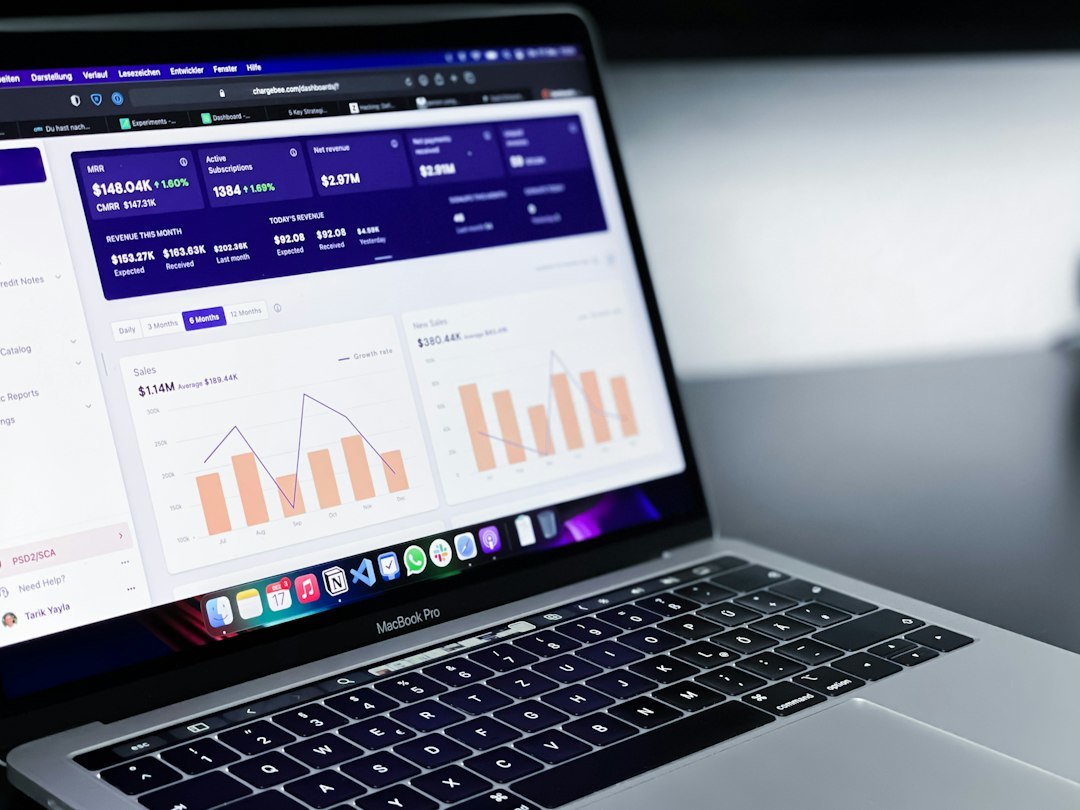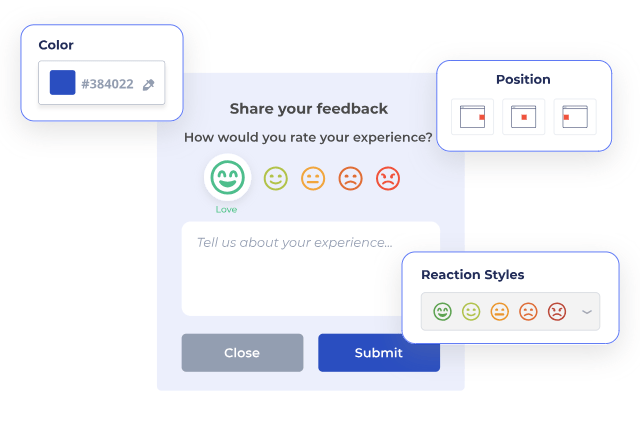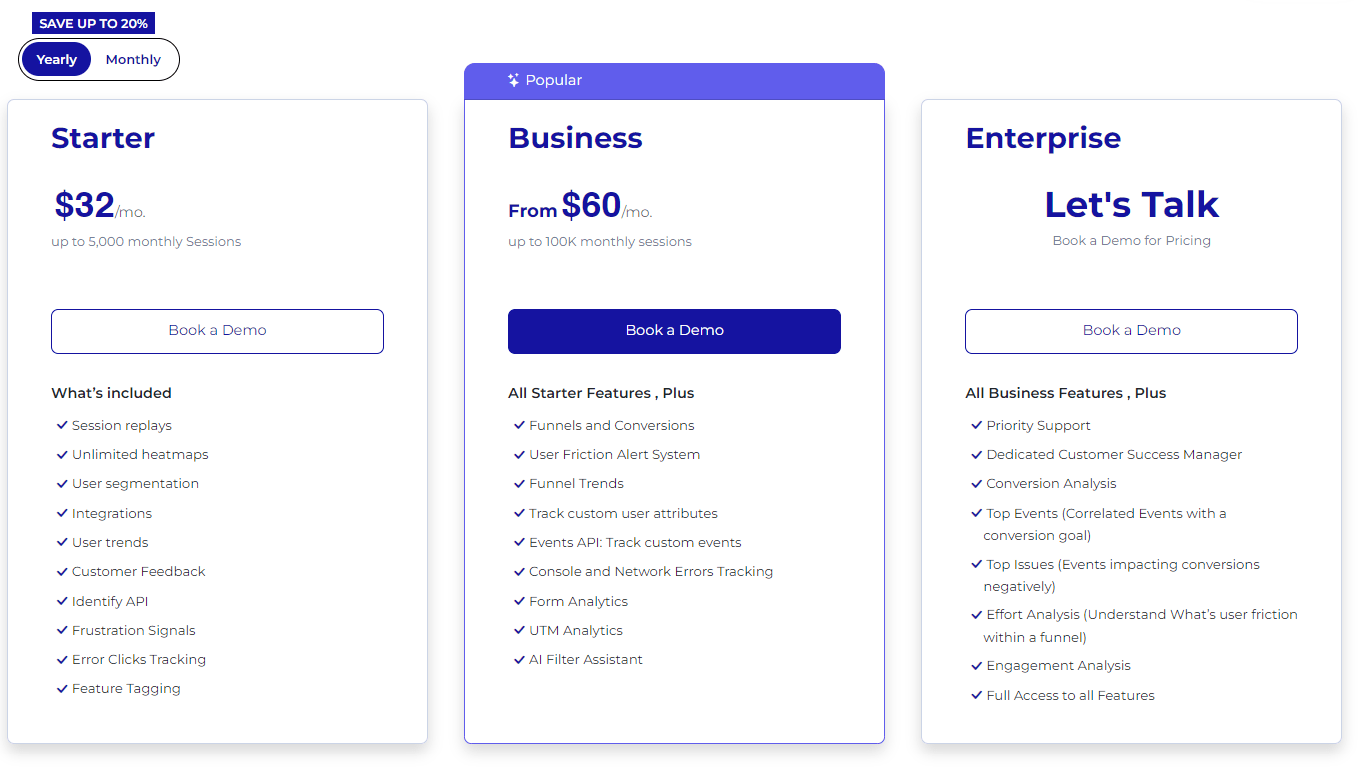Are you looking to optimize your website's performance but unsure if VWO is the right choice? You're in luck! We've compiled...

Best 12 Examples of Demographic Questions for Surveys
Utilizing demographic survey questions gives you a clear idea of who your customers are--more specifically, where they live, how old they are, what religion they follow, and so on. For most people, this information is a solid representation of one's persona, even if it's just a glimpse.
However, good marketing teams only need that glimpse to create effective marketing strategies.
Today, we'll discuss the definition of demographic questions, why demographic data is important, and the most common demographic questions to include in your survey. Additionally, we'll talk about best practices to collect demographic information so you can be sure you do it the right way.
What are Demographic Survey Questions?
Businesses include demographic questions in surveys or market research to gather specific information about the background characteristics of survey respondents.
These questions aim to collect data on various personal and social attributes such as respondent age, gender, ethnicity, education level, employment status, etc., which we can typically categorize as quantitative data as there are a limited number of possible answers.
Including demographic questions in surveys can help you collect demographic information with a larger scope, which will, in turn, help you tailor your marketing strategies faster and more accurately.
When Should You Include Demographic Questions?
The rule of thumb is to include demographic questions only if demographic information is necessary for your market research. Plus, it's best to keep questions about gender identity, ethnicity, religion, and other potentially sensitive topics sparingly (or only if they are absolutely necessary for your survey).
Remember, people are becoming more and more wary of businesses that collect their personal information, so you don't want to include too many demographic questions in a survey, especially if they're not needed. Limiting your use of demographic questions can also help avoid survey fatigue and let respondents focus on the most important parts of your survey.
Why Are Demographic Survey Questions Important?
Before we talk about the different types of demographic survey questions, let's dive into why we should be gathering this information in the first place.
The primary purpose of demographic data is to help businesses gain a better understanding of their target audience. This, in turn, will lead to better market research, customer segmentation, and overall business strategy. Here's a deeper dive into why these questions are so crucial:
Create and Develop More Accurate Buyer Personas
Buyer personas are semi-fictional characters that represent your ideal customers. By including demographic questions in surveys, businesses can gather concrete data about their actual customer base, enabling them to craft more accurate and detailed buyer personas.
This precision allows for the development of highly targeted marketing strategies, product development, and customer service approaches that resonate deeply with each segment of the audience. Essentially, demographic data transforms buyer personas from vague sketches into vivid portraits, ensuring marketing efforts hit the mark more consistently.
Understand Your Target Audience Better
Understanding your target audience goes beyond knowing their age or location; it's about grasping the context of their lives, their daily challenges, preferences, and how they make informed decisions
Demographic survey questions uncover the layers of social and personal factors that influence consumer behavior. This understanding enables businesses to empathize with their audience, tailoring communication and offerings to meet the audience's needs more effectively.
Identify Trends
Markets are dynamic, with trends shifting under the influence of cultural, economic, and social changes. Demographic data collected over time can highlight these shifts, offering insights into emerging trends before they become mainstream.
For businesses, it means being able to anticipate market movements, adapt offerings, and stay ahead of competitors. Whether it's a growing preference for sustainable products among younger demographics or an increased demand for home delivery services in certain areas, understanding these trends is crucial in capturing market share.
Confirm the Validity of Survey Responses
Not all surveys are created equal, and not all responses genuinely reflect your target market. Demographic questions can serve as a litmus test for the validity of the data collected.
By analyzing responses across different demographic segments, businesses can identify outliers or inconsistencies that may indicate misunderstanding of questions or even fraudulent responses. This validation process is crucial for ensuring the reliability of the survey data, which we often use as the basis for major business decisions.
12 Most Common Demographic Questions
Your demographic survey questions should aim to collect data most relevant to your marketing goals. Here are some of the most common questions you can include in your next survey:
1. Gender
Gender is one of the most fundamental demographic survey questions. However, it's a complicated and potentially sensitive topic that needs a careful approach. You want to ask this question in a way that remains respectful and open to different types of answers.
First, use the word "gender" instead of "sex," as the former is more subjective and will allow respondents to answer questions differently. Traditionally, "sex" was used to ask participants about their biological sex, which some respondents may not identify with.
Example: "What gender do you identify as?"
Possible answer options:
- Female
- Male
- Transgender
- Nonbinary
- Prefer not to say
- Other (please specify)
Include a free response box for survey respondents who would like to input another answer that's not among the options.
2. Age
Age affects consumer preferences, needs, and media consumption habits. Knowing the age distribution helps in creating age-appropriate marketing messages and choosing the right platforms for advertising.
For example, products targeting millennials may require different marketing strategies and channels than those aimed at Gen Zs.
Example: "How old are you?"
Possible answer options:
- Under 18 years old
- 19 - 30 years old
- 31 - 45 years old
- 46 - 55 years old
- 55+
- Prefer not to say
You can tailor these age ranges depending on how precise you want to be and the distinct age group you're targeting. For instance, if your target audience is young adults, you might want to divide these ranges further, e.g., 18-21, 22-25, 26-29, etc.
3. Ethnicity
Ethnic background influences cultural practices, traditions, and preferences. By acknowledging the ethnic composition of your audience, you can create culturally sensitive and relevant marketing campaigns that resonate with diverse groups, potentially increasing customer loyalty and brand trust.
Example: "What is your race/ethnicity?"
- African-American
- Asian
- Hispanic or Latino
- Native Hawaiian or Pacific Islander
- Native American
- White/Caucasian
- Multiple
- Other (please specify)
- Prefer not to say
4. Location
Geographic information allows you to curate more localized marketing strategies, as different regions may have varying preferences, weather patterns, and cultural norms that affect consumer behavior.
Localized strategies can include region-specific products, local advertising, and even local language use in marketing materials.
However, the way you collect this information will depend on your target audience. For example, if you're based in the US, you would want a drop-down list of all 50 states. If you're a local business, you should ask the city, town, or zip code.
Example: "Where do you currently live?"
Possible answer options:
- North America
- Europe
- Asia
- Africa
- South America
- Caribbean Islands
- Other
- Prefer not to say
If you're asking a question with too many possible answers, like a city or zip code, use a free response box to make it easier for both you and your respondents.
5. Education Level
Collecting responses on your audience's level of education can help you segment customers more effectively and build more accurate buyer personas.
For example, higher education levels like PhDs might correlate with higher income, influencing purchasing decisions and preferences for premium products.
Example: "What is your highest educational attainment?
Possible answer options:
- Some high school
- High school or GED
- Some college
- Bachelor's degree
- Associate's degree
- Master's degree
- Doctoral degree
- Professional degree
- Trade school
- Prefer not to say
Important tip: Avoid using language like "less than high school" or "no degree" to avoid invoking negative feelings about non-accomplishment. Use terms like "some high school" or "some college" instead.
6. Marital Status
Marital status and family structure have a significant impact on buying decisions, especially for products and services related to housing, leisure, and family activities.
Marketing efforts can be customized to appeal to singles, couples, or families with children, making them more relevant and effective.
Example: "What is your current marital status?"
Possible answer options:
- Single
- Married
- Divorced
- Widowed
- Separated
- Prefer not to say
7. Employment Status
Employment status affects consumers' lifestyles, daily routines, and disposable income. For instance, marketing luxury products might be more effective among employed individuals or those with higher job titles, whereas budget-friendly options could be targeted at students or part-time workers.
Example: "What is your employment status?"
Possible answer options:
- Part-time
- Full-time
- Contractual
- Unemployed, looking for work
- Unemployed, not looking for work
- Retired
- Not able to work
- Other (please specify)
- Prefer not to say
8. Household Income
Household income is the total amount of money earned by people living in the same house, including the respondent, their spouse, and other people living in their home. Usually, surveys collect this information by asking respondents about their annual household income.
Income levels can help you improve the affordability and appeal of products and services, depending on the results you get. For example, this information can guide pricing strategies, promotional offers, and product development to match the financial capacity and willingness to pay of different segments.
Example: "What is your annual household income?"
Possible answer options:
- Less than $25,000
- $25,000-50,000
- $50,000-$70,000
- $70,000-100,000
- $100,000-$150,000
- More than $150,000
- Prefer not to say
Like other demographic questions with potential answers in ranges, you can widen or narrow these ranges based on the goals of your survey and your target audience.
9. Family and Dependents
Dependents, especially kids, play a big role in customer's buying preferences and personal values. Demographic questions that ask about the family structure and caregiver responsibilities can help you develop products and services that cater to the unique needs of single individuals, couples, and families at different stages of their life cycle.
Additionally, recognizing the needs of caregivers, including those caring for elderly family members or individuals with disabilities, can open opportunities for specialized products and services.
Example: "How many dependents do you have?"
Possible answer options:
- None
- 1
- 2
- 3
- 4 or more
- Prefer not to say
Note that not all dependents are kids, so if you want to focus on families with children, you can ask the question in a different way, e.g., "How many children do you have?"
10. Language
Understanding your audience's language preferences helps ensure effective communication and engagement. Multilingual marketing materials and campaigns can significantly increase reach and resonance among diverse linguistic groups, improving customer experience and inclusivity.
Additionally, people's native languages may go hand in hand with cultural influence, traditions, and norms, which are factors that can further affect customer behavior.
Example: "What languages can you speak fluently? Select all that apply"
Possible answer options:
- English
- Spanish
- Italian
- French
- Mandarin
- Arabic
- Hindi
- Russian
- Portuguese
- Urdu
- Indonesian
- German
- Japanese
- Tagalog
- Vietnamese
- Others (please specify)
- Prefer not to say
Alternatively, you can ask, "What is the primary language spoken in your home?"
11. Religion
Religious beliefs can influence consumer behavior, ethical considerations, and product preferences. Businesses operating in culturally diverse markets need to be aware of religious sensitivities to avoid missteps and to tailor products and marketing campaigns that respect cultural and religious norms.
Like gender, it's important to phrase this question respectfully and with an open mind.
Example: "If applicable, please select your religion from the following:"
Possible answer options:
- Roman Catholicism
- Christianism
- Judaism
- Hinduism
- Buddhism
- Islam
- None
- Other (please specify)
- Prefer not to say
12. Political Preferences
While often considered sensitive, political affiliation can offer insights into the values and social issues important to your audience.
Brands that align with or support certain values or causes can foster deeper connections with segments of their audience, although this approach requires careful navigation to avoid alienation and potential biases.
Example: "What best describes your political views?"
Possible answer options:
- Slightly Liberal
- Very Liberal
- Neutral
- Slightly Conservative
- Very Conservative
- Prefer not to say
Best Practices for Collecting Demographic Data

Demographic questions are a powerful tool in market research, but there is a right way to include these in your online surveys. These tips should help you ensure every demographic question counts and your survey respondents won't exit the page before finishing:
Identify the Goals of Your Survey
Before crafting your customer survey, be crystal clear about what you want to achieve. Each demographic question should serve a purpose toward these goals. For instance, if understanding the geographic distribution of your customer base to tailor regional marketing efforts is a goal, include a question about geographic location.
When you identify these goals head-on, you can avoid asking unnecessary questions and increasing the risk of fatigue among survey participants.
Limit Your Questions
Keeping your survey concise respects your respondents' time and increases the likelihood of completion. A survey bogged down with numerous unnecessary questions can lead to respondent fatigue, resulting in drop-offs or less thoughtful responses.
Prioritize questions that yield crucial data for your demographic research goals. Additional questions can be tempting but may dilute the focus and reduce the overall response rate. Remember, quality over quantity should guide your approach to selecting demographic questions.
Choose Which Survey Questions are Mandatory
Deciding which demographic questions are mandatory requires a balance between the need for comprehensive data and respecting respondent comfort and privacy. Mandatory questions should be limited to those critical for the analysis and interpretation of the survey results.
Be mindful of demographic questions that ask for sensitive information. For example, questions about income, religion, or political preferences can be perceived as intrusive. Offering respondents the option to skip these questions can prevent discomfort and maintain trust.
Choose the Best Place for Demographic Survey Questions
Most companies put demographic questions at the end of the survey to avoid making respondents uncomfortable right at the very start. Putting these questions towards the end can also help reduce survey fatigue and improve completion rates.
Use Demographic Questions in Your Next Survey
As you can see, every demographic question we've talked about is asked to gain deeper insights into your desired audience, particularly their backgrounds and buying habits. Still, all demographic questions you include in your survey must serve a purpose, depending on your current goals.
With this guide, asking demographic questions should be a breeze. Use these demographic examples and best practices to create effective surveys from here on out.
Want to get better at collecting customer feedback? Complement your marketing surveys with FullSession's customer feedback tools. Design your own in-app survey and collect visual feedback from website visitors instantly--no coding required.
Install Your First Website Survey Tool Right Now
It takes less than 5 minutes to set up your first website or app survey form, with FullSession, and it's completely free!
FullSession Pricing Plans

The FullSession platform offers a 14-day free trial. It provides two paid plans—Basic and Business. Here are more details on each plan.
- The Starter plan costs $39/month or $32/year and allows you to monitor up to 5,000 monthly sessions with up to 6 months of data storage.
- The Business plan costs $75/month or $60/year and helps you to track and analyze up to 100,000 monthly sessions with up to 12 months of data storage.
- The Enterprise plan has custom pricing and offers customizable sessions plus full access to all features.
FAQs about Demographic Survey Questions
Won't asking personal questions scare people away?
It's all about the approach. Ensure anonymity and emphasize the value their responses bring to improving their experience.
How can I ensure the data I collect is used ethically?
Transparency is key. Be clear about how you'll use the data, stick to your word, and protect their information like it's your own.
Can demographic questions be tailored for B2B surveys?
Absolutely! Adjust the lens to focus on business demographics such as industry, company size, and role in the decision-making process.




